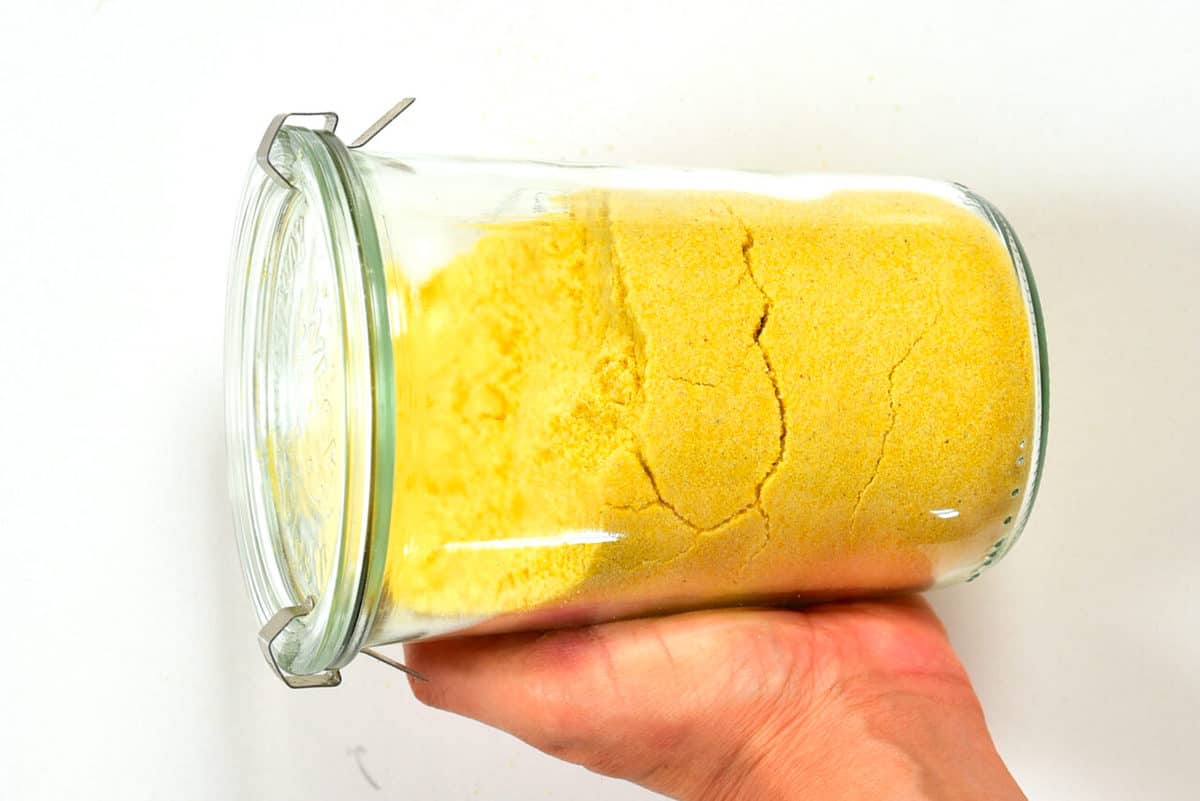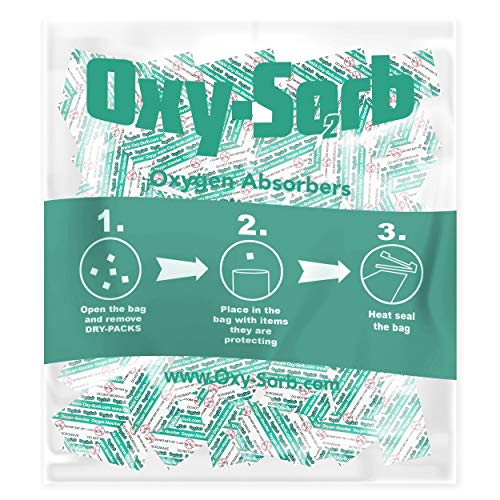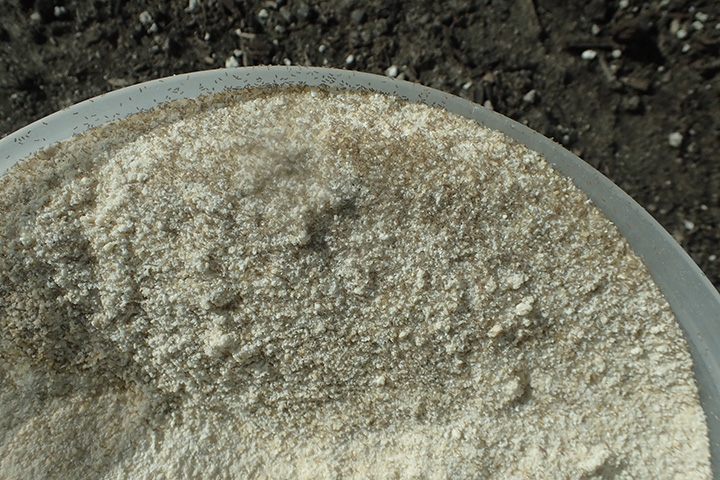How to store cornmeal? How to tell if cornmeal has gone bad?
Jump To:
You might have tried to make cornbread, corn muffins, or corn porridge with a pack of cornmeal. Now, several months later, you find the open bag of cornmeal in your storage and now you aren’t certain if it is still safe to use! How to store cornmeal? What happens if you eat bad cornmeal? Here is everything you need to know! Not just cornmeal! Find more on how to store food.
Storing cornmeal is the same as flour, but that’s not the whole truth. To be exact, it depends on what type of cornmeal you’re using. Yes, there are two kinds of cornmeal: degerminated cornmeal and whole-grain cornmeal. Cornmeal made from the dried kernels of corn is the whole-grain variety, grinds everything, even the germ. The germ in degerminated cornmeal is removed before it can be ground.
Storage Techniques For Cornmeal
Degerminated cornmeal should last for several months at room temperature, or up to one year at normal ambient temperatures. You can also store it in the freezer for up to two years. Whole-grain cornmeal will keep its quality for at least half a year if it is refrigerated or frozen after opening. Let’s now talk about storage guidelines.
Cornmeal must be sealed once it is opened. It is best to place the ground corn in an airtight container, or sealable glass jar. This will keep the cornmeal safe from insects and moisture. Whole-grain cornmeal is more volatile than the other. It won’t keep for very long in the pantry so it’s best to store it in a fridge immediately after opening the package.
Air-Tight Containers

- Cornmeal can be stored in airtight containers like mason jars and good plastic containers to increase its shelf life. This will keep the cornmeal from oxidizing and pests (moths love it).
- Cornmeal can last for several years as long as it is kept at a low temperature and no humidity. Keep the containers away from heat sources like stoves and water heaters.
Pest eggs can sometimes be found in cornmeal before you purchase them. Their larvae will be visible inside the container after they hatch within a few weeks to months.
Oxygen Absorbers

Oxygen absorbers can be used in mason jars and food-grade buckets. Oxygen absorbers are tiny iron packets that grab oxygen molecules, now as oxygen can’t cause food to oxidize, it will last longer.
The cornmeal will remain safe to eat because mold, bacteria, and other pests won’t survive without oxygen.
Corn Meal In The Fridge – Can you keep cornmeal in refrigerator?
Cornmeal should be stored in the same way as flours and other powdered foods. This is particularly important because cornmeal, like other powders, can absorb moisture from the surroundings. It all depends on what variety of cornmeal you have. Both are fine at room temperature when they have not been opened.
You can use the cabinets in either the pantry or the kitchen depending on your preference to store unopened cornmeal.
When it comes to whole grain cornmeal once opened, as it’ll not last as long as degerminated cornmeal, you can keep it in the fridge or freeze in an airtight container.
Corn Meal In The Freezer – How long does cornmeal last in the freezer?
The cornmeal in freezer can last indefinitely when properly stored.
- Degerminated cornmeal may still be placed at room temperature (cool, dark place) once you have opened the package. Whole grain varieties require refrigeration or freezing to achieve the best results.
- Cornmeal should be sealed tightly if you plan to keep it in the freezer. It can be difficult to seal the plastic packaging that cornmeal comes in, so make sure you place the powder in an airtight container.
Signs Of Spoilage For Cornmeal – How to tell if cornmeal has gone bad?

These are signs that you should look out for when trying to determine if cornmeal has gone bad.
1. Smell Test
Fresh cornmeal is mildly sweet and nutty.
A bad smell is a clear sign. Take a wiff at the cornmeal container. Throw it out immediately if it has a bad smell or rancid.
2. Insects
- Any sign of insects in food should be thrown out. It doesn’t matter if it is dead or alive; large or small, this indicates that your cornmeal has been contaminated.
- However, you should be aware that if there are any black or gray specks found in whole-grain cornmeal it may be due to the germ content.
3. Mold or Clumping
- If you find moldy or heavy clumps in your cornmeal, this is a sign that water has entered the grain.
- Cornmeal that has turned moldy should be thrown out.
4. Color Change
- Cornmeal can be white, yellow, or bluish-gray. If there are green or brown spots on cornmeal, it could be contaminated by mold, moisture, or freezer burn.
- Feel the cornmeal by touching it with your fingertips. It should not be sticky but have a dry, powdery texture.
5. The Taste Test
- You can use cornmeal in recipes if it passes the above tests. You can also taste it, just use it a little. Cornmeal should be clean tasting and mildly sweet.
- Cornmeal that tastes strange or sour must be thrown out.
Cornmeal slowly loses its quality. Cornmeal loses some of its corn flavors with time. A product that has been around for a while won’t taste as good as one that is newer. The whole-grain variety degrades quicker.
Key takeaways
- There are two types of cornmeal: whole grain or degerminated. The degerminated cornmeal retains its quality for longer.
- You should throw out any cornmeal that smells bad, rancid, bitter, or contains insects, alive or dead.
- If stored at room temperature, degerminated cornmeal can keep its quality up to one year after it was made. It will last a few years if stored frozen. Whole grain varieties last for a few months after their date.
- Degerminated cornmeal can be stored in a pantry or cabinet in your kitchen at all times. For best results, whole grain varieties of cornmeal must be refrigerated or frozen after opening the packaging.
